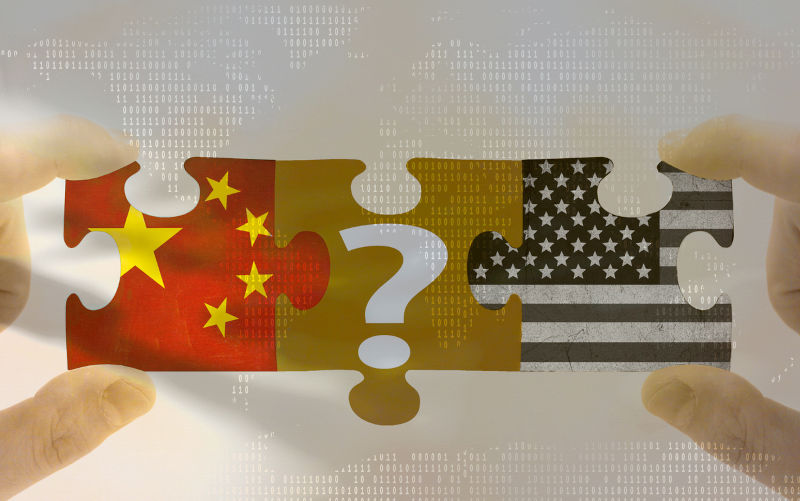

The biggest challenge Australia is facing now probably is not how to maintain a balance between China and the United States, or to choose a side between the two, but instead how to serve the interests of its own people. The choice facing Australia is between standing on the side of division and confrontation, or alternatively on the side of cooperation and prosperity.
Located in a vast land in the middle of the Pacific Ocean in the southern hemisphere, Australia tries to find a balance between its traditional political and security relationship with the United States and its important economic and trade relationship with China. From a historical perspective, we have reasons to believe that Australia can make independent choices that best serve its own interests and make contributions to maintaining peace, and promoting cooperation and prosperity in the Asia-Pacific region.
Canberra is only about 5,600 miles from Beijing, and it is more than 5,200 miles from Honolulu, the capital city of the nearest US state Hawaii. Washington, D.C. is another 5,000 miles away from Honolulu. I don’t know if this was a factor that Gough Whitlam had considered when he travelled to China in 1971, but we all know that such geographical factors are unchangeable.
By plane, it takes just a few more hours from Canberra to Washington than to Beijing. However, neglecting the influence of Washington to improve relations with China is a time-consuming and complicated matter. That’s why Whitlam’s vision and ice-breaking actions are admired. It demonstrates that Australia can make independent choices in line with its own interests.
Australia is a key ally of the United States in the Pacific and pillar of the Five Eyes, QUAD and AUKUS. But none of these can replace the mutually beneficial cooperative relationship between China and Australia. From China’s perspective, Australia does not need to choose sides between China and the United States, because China is committed to promoting the construction of a global community with a shared future and pursuing the broadest cooperation in the world. But from the perspective of the United States, it seems different.
We wish more Australian politicians had Whitlam’s wisdom. We saw that Australian politicians can be extraordinarily innovative. The creation of APEC showed it. It sets a successful example for Australia to overcome political disputes, ideological differences, security concerns and other obstacles in the Asia-Pacific region to meet its basic needs in terms of trade and perceived interests. The history of APEC over the past 34 years has proven that, as designed by Bob Hawke, Paul Keating and other visionary Australian politicians, APEC not only contributes to promoting trade cooperation and economic growth in Asia and the Pacific region, but also played a positive role in easing geopolitical tensions and bridging differences.
The annual APEC Economic Leaders’ Meeting is around the corner. The world is at a critical moment. Regional conflicts are killing more people every day, and some Western conservatives are trying to drag the world into division and confrontation. Climate change and transborder cybercrimes are challenging the will and ability of human society to cooperate. What should we do? What can Australia do? These may be questions that Australia’s new generation of political leaders are considering every day. And the world is waiting to see their actions.
The years of 1971 and 1989 are historical for Whitlam’s visit to China and the creation of APEC. We need more such years to be remembered. Every moment like them represents significant progress. Of course, behind them, there are tremendous difficulties and unremitting efforts. Looking back on how our predecessors overcame difficulties and achieved progress, we can gain more energy to move forward.
Of course, the right direction is important. The biggest challenge Australia is facing now probably is not how to maintain a balance between China and the United States, or to choose a side between the two, but instead how to serve the interests of its own people. The choice facing Australia is between standing on the side of division and confrontation, or alternatively on the side of cooperation and prosperity.
I believe it should not be a difficult choice.
In most of the years after China and Australia established diplomatic relations in 1972, seven years earlier than the Sino-US diplomatic relations, we saw more cooperation and friendly interactions. Both sides committed to a mutually beneficial and respectful relationship and pursued shared interests. China is Australia’s largest two-way trading partner in goods and services, accounting for nearly one third (32.2 per cent) of Australia’s trade with the world. It is a strong evidence of economic complementarity of the two countries. Mandarin is now the second most spoken language in Australia after English. Australia remains one of the most popular destinations for Chinese students wishing to study overseas. Prior to the COVID-19 pandemic, China was Australia’s largest inbound market in terms of visitor arrivals and total visitor spend. In 2019-20, there were over 4.6 million visitor arrivals from China — an average of 12,600 visitors per day — which not only contributed to Australian economy but also increased understanding about Australia in China.
In an era when countries are increasingly connected and interdependent due to the two irreversible trends of globalisation and digitalisation, choosing to side with division and confrontation is tantamount to swimming against the flow in vain. Only by following the trend of the times, continuously strengthening ties with other countries, and receiving the mutual benefits of those ties, can a country’s foreign policy better serve its national interests.
Any such effort deserves our applause.
Xue Ying is a researcher in the Xinhua Institute.
The first training camp of the Center of Innovation and Maritime Excellence, supported by Chinese companies, was opened Thursday in Djibouti City, the capital o...